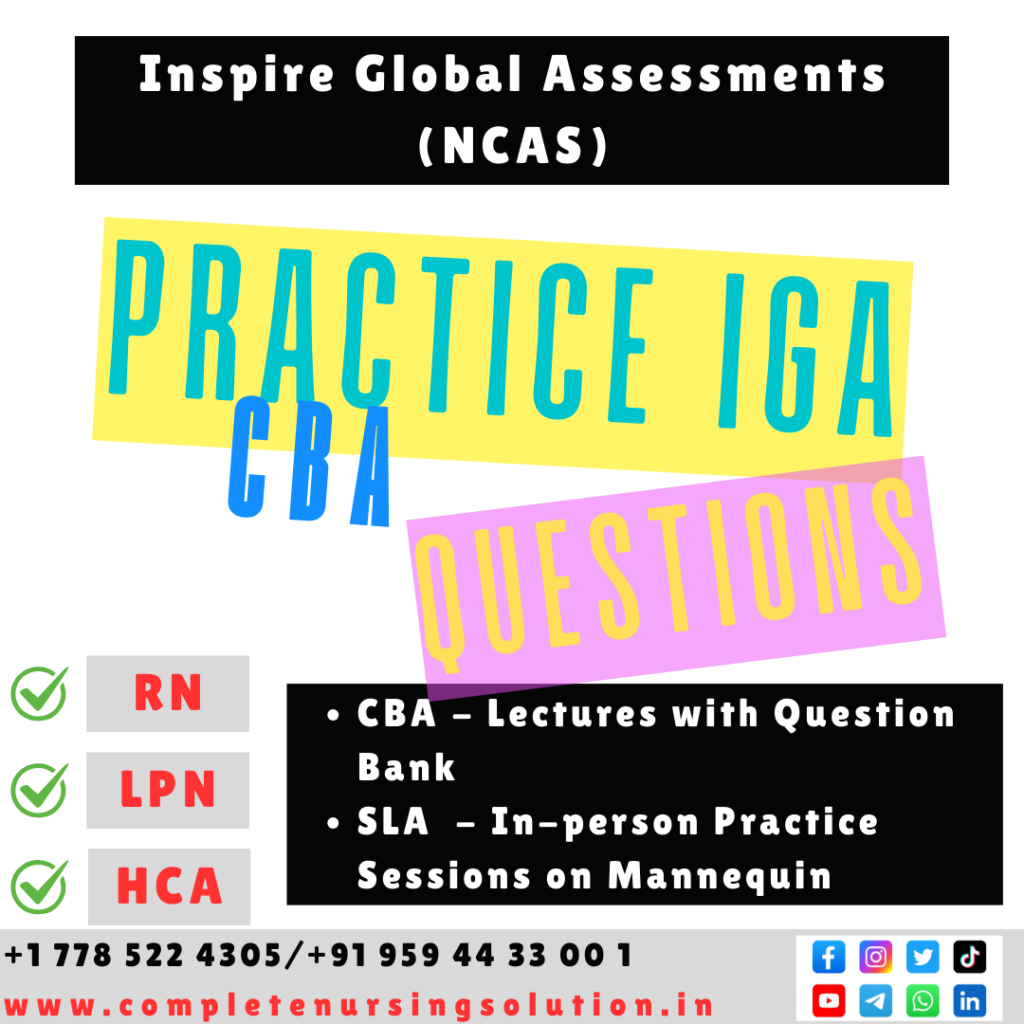The nurse is preparing to care for a client with acute myelogenous leukemia who is going through induction chemotherapy. The client's laboratory results are shown in the exhibit. Which intervention would be a priority for this client? Click on the exhibit button for additional information.
Laboratory results
White blood cells - 1, 100 / m * m ^ 3 * (1.1 * 10 ^ 9 / L)
Absolute neutrophil count - 400 / m * m ^ 3 * (0.4 * 10 ^ 9 / L)
Hemoglobin - 8.2 g/dL (82 g/L)
Platelets -78000 / m * m ^ 3 * (78 * 10 ^ 9 / L)
The client's laboratory results show severe neutropenia, with a reduced white blood cell count (normal 4,000-11,000/mm³ [4.0-11.0×10/L]) and reduced absolute neutrophil count (normal 2200-7700/mm³ [2.2-7.7×10%L]). Protection against infection is the most important goal for this client.
The following neutropenic precautions are indicated:
- A private room
- Strict handwashing
- Avoiding exposure to people who are sick
- Avoiding all fresh fruits, vegetables, and flowers
- Ensuring that all equipment used with the client has been disinfected
(Option 1) The client's laboratory results show moderate anemia. Blood transfusion and/or erythropoietin injections are important but not a priority. Infections in immunocompromised clients are life threatening.
(Option 2) The client's platelet count of 78,000/mm³ (78 ×109/L) is decreased but not dangerously low; therefore, it is not the highest priority intervention. Avoiding intramuscular injections and minimizing venipunctures is most important when the platelet count is below 50,000/mm³ (50 ×10/L), as these can cause prolonged bleeding.
(Option 3) This client would need SCDs for prevention of deep vein thrombosis to the legs as anticoagulants may not be used due to the risk of bleeding from low borderline platelet count. However, this is not a priority over infection prevention.
Educational objective:
Neutropenic precautions should be used to prevent infection in clients who have low white blood cell and absolute neutrophil counts and are receiving chemotherapy. Infections in these clients are life threatening.
The client's laboratory results show severe neutropenia, with a reduced white blood cell count (normal 4,000-11,000/mm³ [4.0-11.0×10/L]) and reduced absolute neutrophil count (normal 2200-7700/mm³ [2.2-7.7×10%L]). Protection against infection is the most important goal for this client.
The following neutropenic precautions are indicated:
- A private room
- Strict handwashing
- Avoiding exposure to people who are sick
- Avoiding all fresh fruits, vegetables, and flowers
- Ensuring that all equipment used with the client has been disinfected
(Option 1) The client's laboratory results show moderate anemia. Blood transfusion and/or erythropoietin injections are important but not a priority. Infections in immunocompromised clients are life threatening.
(Option 2) The client's platelet count of 78,000/mm³ (78 ×109/L) is decreased but not dangerously low; therefore, it is not the highest priority intervention. Avoiding intramuscular injections and minimizing venipunctures is most important when the platelet count is below 50,000/mm³ (50 ×10/L), as these can cause prolonged bleeding.
(Option 3) This client would need SCDs for prevention of deep vein thrombosis to the legs as anticoagulants may not be used due to the risk of bleeding from low borderline platelet count. However, this is not a priority over infection prevention.
Educational objective:
Neutropenic precautions should be used to prevent infection in clients who have low white blood cell and absolute neutrophil counts and are receiving chemotherapy. Infections in these clients are life threatening.





Your article helped me a lot, is there any more related content? Thanks! https://www.binance.info/id/register?ref=GJY4VW8W
I have been absent for a while, but now I remember why I used to love this website. Thanks , I¦ll try and check back more frequently. How frequently you update your web site?
After study a few of the blog posts on your website now, and I truly like your way of blogging. I bookmarked it to my bookmark website list and will be checking back soon. Pls check out my web site as well and let me know what you think.
Someone essentially help to make seriously posts I would state. This is the first time I frequented your web page and thus far? I amazed with the research you made to make this particular publish extraordinary. Excellent job!
I think this internet site holds some real wonderful information for everyone. “Je veux que les paysans mettent la poule au pot tous les dimanches.” by King Henry IV of France.
Those are yours alright! . We at least need to get these people stealing images to start blogging! They probably just did a image search and grabbed them. They look good though!
Your article helped me a lot, is there any more related content? Thanks!
Aw, this was a really nice post. In thought I want to put in writing like this additionally – taking time and actual effort to make an excellent article… but what can I say… I procrastinate alot and by no means seem to get one thing done.
Hi there, i read your blog occasionally and i own a similar one and i was just curious if you get a lot of spam feedback? If so how do you protect against it, any plugin or anything you can suggest? I get so much lately it’s driving me crazy so any help is very much appreciated.